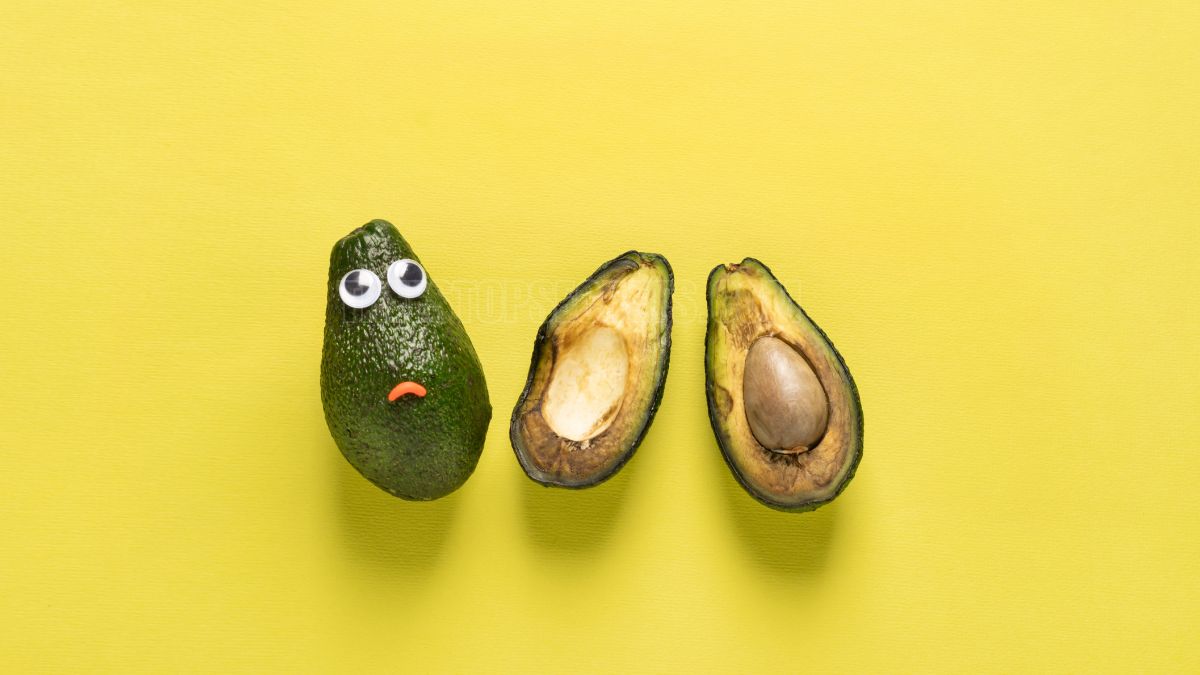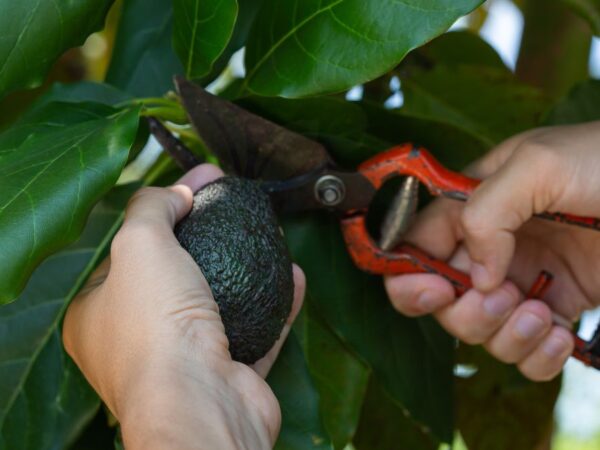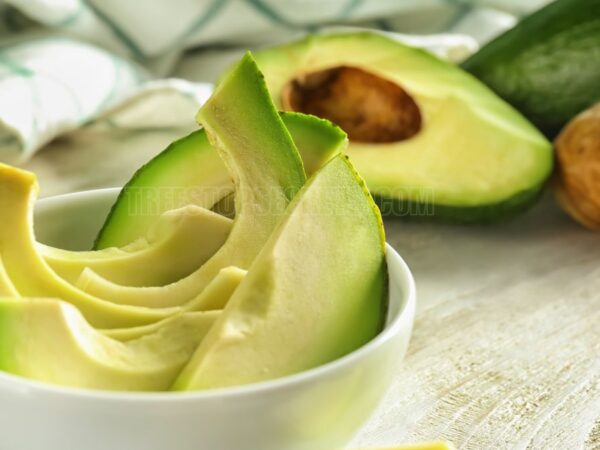Wondering if it’s safe to eat that overripe avocado sitting on your counter? While avocados are delicious and nutritious, their ripeness can impact their safety and taste. In this article, we’ll explore what happens when avocados become overripe, and if they’re still good to eat. We’ll also provide tips on how to determine if your avocado is still fresh or should be tossed out.
An overripe avocado is one that has gone beyond its prime ripeness. While it’s generally safe to eat, its texture might be mushy and it could have an off taste. Check for any signs of mold or a rancid smell before consuming. If these are absent, the avocado is still edible but may not be as enjoyable.
Curious if that overripe avocado in your kitchen is still safe to eat? We’ve got the answers you need to make sure you’re not wasting good food. Read on to learn about what to look for and how to safely enjoy your overripe avocados.
Avocado Consumption Safety
Knowing If Your Avocado Is Ready
When it comes to avocados, the trick is knowing when they're just right. A ripe avocado gives a little when you gently squeeze it. Too hard, and it’s not ready; too squishy, and it might be past its prime. Ripening kicks off from the top and works its way down, so if the bottom part is brown, you might be able to salvage the upper, greener parts.
Here's a cheat sheet to judge your avocado:
| Ripeness Stage | How It Looks | How It Feels |
|---|---|---|
| Not Ready | Bright green and tough | Hard as a rock |
| Just Right | Dark green to black | Soft but not squishy |
| Too Far Gone | Dark, soft spots | Might feel like mashed potatoes |
Eating Past-Prime Avocados
So, can you chow down on an avocado that's a bit over the hill? Sometimes, yes, with some caution. Steer clear of any parts that look funky or smell sour — that's a fast track to a stomachache. If only bits of the flesh are brown, scoop out those parts and enjoy the rest.
Here's your checklist for iffy avocados:
| Sign | What To Do |
|---|---|
| Smells Off | Toss it |
| Moldy Bits | Toss it |
| Brown Flesh | Cut out the brown, eat the rest |
| Super Soft | Could be bad, but check under the skin |
Keep an eye on your avocado stash to minimize waste. A little lemon juice on a cut avocado and a quick refrigerate can delay browning. Being avocado-savvy means fewer wasted fruits and fresher bites in your meals!
Making the Most of Overripe Avocados
Hey, fellow avocado lover. Ever find yourself holding an avocado that's a bit too mushy for slicing? Don't toss it! They might be past their prime for salads, but these creamy gems still have plenty to offer. Here’s the scoop on how to turn those overripe avocados into culinary gold.
Fun Ways to Use Overripe Avocados
When life gives you overripe avocados, mash 'em up! These squishy friends are ideal for anything that needs a good smooshing or blending. Here are a few tasty options that I've tried and loved:
| Dish | What's So Great About It? |
|---|---|
| Guacamole | Classic dip that’s even smoother with a slightly overripe avocado. |
| Avocado Spread | Perfect for smearing on toast or inside sandwiches. |
| Chocolate Avocado Pudding | Chocolate hides the avocado flavor, leaving a rich, creamy dessert. |
| Chocolate Caramel Avocado Brownies | Fudgy brownies with a health kick from the avocado. |
These are just a few ways to turn a mushy avocado into a delicious treat. They’re easier to blend or mash compared to firmer ones, making them perfect for recipes that crave smooth textures (Fine Dining Lovers).
Getting Creative in the Kitchen with Overripe Avocados
Making sure your overripe avocado is still good to eat is key. Here’s what I do to check:
- Squeeze Test: The avocado should give slightly under gentle pressure.
- Smell and Taste: It shouldn't smell or taste off.
- Appearance Check: Remove any brown spots or fibers. Discard if moldy.
If it passes these tests, it’s game on. Here are some of my favorite ways to incorporate them:
| Dish | How I Use Overripe Avocados |
|---|---|
| Smoothies | Adds a velvety texture and ups the nutrition. |
| Salad Dressing | Blended into dressings for a creamy consistency. |
| Baked Goods | Adds moisture and healthy fats to muffins, brownies, and more. |
These overripe avocados make cooking fun and reduce food waste. Plus, they pack a nutritious punch with fiber and vitamins like C, E, and K (Simple and Savory).
By getting creative with your overripe avocados, you’re not just making yummy meals—you’re also being kind to your wallet and the planet. So next time you spot a past-its-prime avocado, get excited about the delicious possibilities.
Why Avocados Rock
What's Inside the Green Goodness?
Let's get real. Avocados are not just Instagram darlings; they're nutritional powerhouses. Every time I slice into that creamy, green wonder, I'm not just after the taste—I'm chasing the goldmine of nutrients packed inside. Here’s what you get when you dig into one:
| Nutrient | Amount per Avocado | % of Daily Needs |
|---|---|---|
| Calories | 240 | 12% |
| Total Fat | 22g | 34% |
| Saturated Fat | 3g | 15% |
| Fiber | 9g | 32% |
| Protein | 3g | 6% |
| Vitamins (C, E, K) | Loads of them | Various |
With 8% of your daily fiber and nearly 20 essential vitamins and minerals, avocados do more for your diet than any fancy multivitamin ever could. This buttery fruit is cholesterol-free but brimming with vitamins C, E, K, and an orchestra of B vitamins you need to stay sharp and healthy. Oh, and if you're curious about avocado chocolate mousse, it's a thing, and yes, it's delicious (Chocolate Covered Katie).
Avocados: The Superheroes of Your Diet
Why do I keep stuffing my face with avocados? Three words: Heart. Health. Powerhouse. Adding avocados to your meals brings a lineup of benefits you can't ignore.
- A Happy Heart: The monounsaturated fats in avocados can kick bad cholesterol to the curb, giving your ticker the love it deserves.
- Waistline Win: Feeling stuffed after a meal? That's the fiber talking, making it easier to watch your weight without feeling deprived.
- Antioxidant Army: Those vitamins and healthy fats work as your body's bouncers, keeping oxidative stress at bay.
Versatile and delish, avocados slide smoothly into any dish you fancy. From smashing them on toast to blending them into a smoothie or even whipping up some avocado brownies (yes, really!), this green gem is kitchen magic. And if you're wondering, "Can you eat an overripe avocado?"—as long as it’s not funky or moldy, you're good to go.
Avocado Varieties
Digging into the different kinds of avocados can spice up your food game. These little green treasures can make your meals pop. I’m going to break down some of the favorites and what makes each one special.
Popular Avocado Types
| Avocado Type | Skin Feel | Ripeness Shade | Best Time to Get 'Em |
|---|---|---|---|
| Hass | Bumpy | Dark green to black | All year |
| Florida | Smooth and thin | Green | November to March |
Hass avocados are everyone’s go-to. When ripe, their bumpy dark green skin turns almost black. They’re creamy with a hint of nuttiness—a total win in guacamole and almost anything else (Simple and Savory).
Florida avocados are the smoother cousins. Their thin green skin stays green, even when they’re ready to eat. They’re less creamy, a bit more watery, and have a mild, slightly nutty flavor. Their prime time is November to March, a bit of a seasonal treat (Simple and Savory).
Avocado Flavor Insights
These avocados bring different vibes to your plate, so pick the one that fits your dish.
- Hass Avocados: Rich and buttery with a nutty kick. Perfect for spreading, smashing, or anything creamy.
- Florida Avocados: Light and slightly nutty. Great for salads and fresh dishes.
Knowing these tasty tidbits helps you grab the right avocado for whatever you’re cooking. Whether it's for a zesty salad, hearty toast, or even a sweet treat, picking the right type makes all the difference.
Avocado Dessert: Chocolate Mousse
Recipe for Avocado Chocolate Mousse
I absolutely adore making avocado chocolate mousse; it’s a quick and healthy way to satisfy my sweet cravings. Here’s my go-to recipe:
Ingredients
| Ingredient | Amount |
|---|---|
| Ripe Avocados | 2 |
| Cocoa Powder | 1/2 cup |
| Sweetener (honey, agave) | 2-6 tablespoons (to taste) |
| Vanilla Extract | 1 teaspoon |
| Almond Milk (or any non-dairy milk) | 3-4 tablespoons |
Instructions
- Scoop out the avocado flesh into a blender.
- Add cocoa powder, sweetener, vanilla extract, and almond milk.
- Blend until smooth and creamy.
- Taste and add more sweetener if needed, then blend again.
- Spoon into bowls and refrigerate for at least 30 minutes before enjoying.
Feel free to tweak the recipe—adjust the sweetener to match your taste. If you prefer it sweeter, just add a bit more.
Taste and Texture of Avocado Mousse
Surprisingly, the funky avocado taste takes a backseat in this mousse. The deep chocolate flavor steals the show, creating a dessert even avocado skeptics will love. The creamy texture, thanks to those ripe avocados, rivals the decadence of traditional mousse but without all the dairy heaviness.
On a personal note, it's a treat to indulge in something that's not just yummy but also packed with good-for-you fats and nutrients. It’s also my favorite method for rescuing overripe avocados that are just a bit past their prime. However, beware of any spoilage signs: a sour taste, rancid smell, or mold are definite no-gos.
In the end, avocado chocolate mousse is a tasty, satisfying dessert that not only quells my sweet tooth but lets me reap the health benefits of avocados.
Keeping and Freezing Avocados
Trust me, treating avocados right makes all the difference in their taste and benefits. Here are some of my favorite ways to store and freeze avocados so you can enjoy their yumminess anytime.
Keeping Avocados Fresh
Here's how I keep avocados fresh and tasty:
| How to Store | What to Do |
|---|---|
| Room Temperature | Keep firmer avocados on the counter for 2-7 days. Check them daily so they don’t turn into mush. |
| Fridge | Pop your ripe avocados in the fridge to keep them fresh for about a week. |
| Cut Avocados | Squeeze a bit of lemon or lime juice on cut avocados to stop browning. Wrap in plastic wrap and stick them in the fridge. |
Wondering if that avocado's seen better days? Here’s what to watch out for: super soft spots with dents, black skin, dark stringy flesh, weird smells, or mold. If you see any of that, toss it! Healthline has more details.
How to Freeze Avocados
When avocados are coming out of your ears, freezing them is a lifesaver. Here’s the deal:
- Whole Avocados: Rinse and chuck them in the freezer. They’ll last up to six months but might get a bit weird in texture and flavor. Simple and Savory explains more.
- Cubed Avocados: Cut into cubes and freeze on a baking sheet. Once hard, bag them up.
- Mashed Avocados: Mash them up, then wrap tightly in plastic or put in a freezer-safe container. Perfect for guac later!
By doing this, I get to enjoy avocados at their best, even when they’re not in season. Happy avocado-ing!
Final Thoughts: Can You Eat an Overripe Avocado Safely?
Eating an overripe avocado is generally safe as long as you check for any signs of spoilage like mold or a bad odor. Although its texture may be less appealing and its flavor might be off, it can still be used in recipes where texture is less critical. Always use your senses to ensure the avocado is safe to eat.
FAQs about "Can You Eat an Overripe Avocado Safely"
Q: What does an overripe avocado look like?
A: An overripe avocado usually has a dark, nearly black skin and may feel very soft to the touch. It may also have a slightly sour smell. The flesh inside can be mushy and may have brown or dark spots.
Q: How can I tell if an overripe avocado is still safe to eat?
A: Check for mold on the surface and smell the avocado. If there is a strong, unpleasant odor or visible mold, it’s best to discard it. If it just feels mushy and has a slight off taste, it’s still safe to eat.
Q: Can you cook with overripe avocados?
A: Yes, you can cook with overripe avocados. They work well in recipes like smoothies or baking where the texture isn’t as crucial. Just ensure they don’t have any signs of spoilage.
Q: What are the risks of eating an overripe avocado?
A: The main risk is the potential for an off taste or unpleasant texture. If the avocado has developed mold or a rancid smell, consuming it can cause foodborne illness. Always inspect before eating.
Q: How should I store avocados to prevent them from overripening?
A: Store avocados in the refrigerator if you’re not ready to eat them. If they are ripe, keep them in the fridge to extend their shelf life. If they are still hard, leave them at room temperature until ripe.
Image Source: Paid image from CANVA




![How Long to Grow an Avocado Tree? [Find Out Here!]](https://treestopsecrets.com/wp-content/uploads/2024/05/How-Long-to-Grow-an-Avocado-Tree-600x450.jpg)
